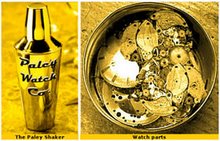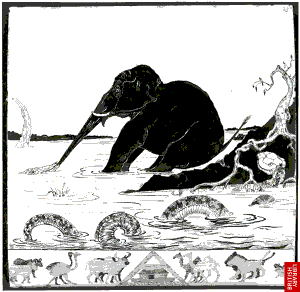 This weird and wonderful creature is the star-nosed mole. It relies heavily on its remarkable star-shaped nose. This organ enables the star-nosed mole to decide whether something is edible with astonishing speed. The star-shaped nose is a highly specialized sensory-motor organ, which consists of 11 pairs of fleshy finger-like 'tendrils'. The star is divided into a high resolution central fovea region and less sensitive peripheral areas. its surface is covered with 25,000 mechanoreceptors called Eimer's organs. This makes the star ultrasensitive - it is, in fact, the most sensitive organ in the entire animal kingdom.
This weird and wonderful creature is the star-nosed mole. It relies heavily on its remarkable star-shaped nose. This organ enables the star-nosed mole to decide whether something is edible with astonishing speed. The star-shaped nose is a highly specialized sensory-motor organ, which consists of 11 pairs of fleshy finger-like 'tendrils'. The star is divided into a high resolution central fovea region and less sensitive peripheral areas. its surface is covered with 25,000 mechanoreceptors called Eimer's organs. This makes the star ultrasensitive - it is, in fact, the most sensitive organ in the entire animal kingdom.The star-nosed mole evolved to inhabit a wetland habitat, and so was placed under selective pressure to exploit the dense populations of small insects it found in its new environment.
Storyteller: Catania, K. Olfaction: Underwater 'sniffing' by semi-aquatic mammals.
Source: The star-nosed mole's amazing appendages







.jpg)























4 comments:
he's so cute!
Hi Dolly,
Why would a mole need to "decide whether something is edible with astonishing speed?" It's not like a shark or a cheetah where quick instincts mean life and death.
How do they measure "sensitivity," by the number of nerves?
Just wondering.
Dave Duffy
Kingsburg, CA
According to the author: "The star-nosed mole evolved to inhabit a wetland habitat, and so was placed under selective pressure to exploit the dense populations of small insects it found in its new environment. It consumes its prey in large numbers, and the dazzling speed with which it does so counterbalances the low nutritional value of each individual piece of food, and maximizes the time available for finding food. The proximity of the star-shaped nose to the mouth greatly reduces the handling time required before food can be ingested, and is a major factor in how the star-nosed mole can find and eat food so quickly."
The storyteller makes it sound like some anthropomorphic mother nature took the mole out of a dry habitat, dropped it in a "new environment" and waited for "selective pressure" to do its thing. This sort of description should make gradualists queasy.
Post a Comment